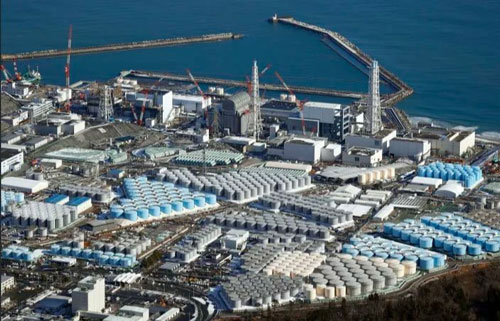Tokyo
The Japanese government has decided to dispose of massive amounts of treated but still radioactive water stored in tanks at the wrecked Fukushima nuclear plant by releasing it into the Pacific Ocean, local media reported Saturday, a conclusion widely expected but delayed for years amid protests and safety concerns.
Prime Minister Yoshihide Suga told top fisheries association officials on Wednesday that his government believes the release into the sea is the most realistic option and that a final decision would be made “within days.”
A formal announcement is expected soon at a meeting of key ministers, Industry Ministry officials said Saturday.
They declined to confirm reports from Kyodo News and other media that the ministers will meet as early as Tuesday and have already reached a final decision.
A government panel, after seven years of discussion on how to dispose of the water without further harming Fukushima’s image and the region’s fisheries and other businesses, prepared a report two years ago saying a release into the sea is the most realistic method. The report mentioned evaporation as a less desirable option.
The release is expected to start in about two years after the utility, Tokyo Electric Power Co., sets up a facility approved by nuclear authorities.
According to a preliminary estimate, a gradual release of the water is expected to finish before the plant cleanup ends.
A release of the water into the sea has faced fierce opposition from local fishermen and residents.
Japan Fisheries Cooperatives Chairman Hiroshi Kishi said he rejects Suga’s proposed release plan and demanded the government explain how it will address damage to the fishing industry.
The government has said it will do its utmost to support local fisheries and provide compensation for any damages.
In 2011, a powerful magnitude 9.0 earthquake and tsunami damaged the Fukushima plant’s cooling systems, causing three reactor cores to melt.
In the decade since, cooling water has constantly escaped from the damaged primary containment vessels into the basements of the reactor buildings.—AP










